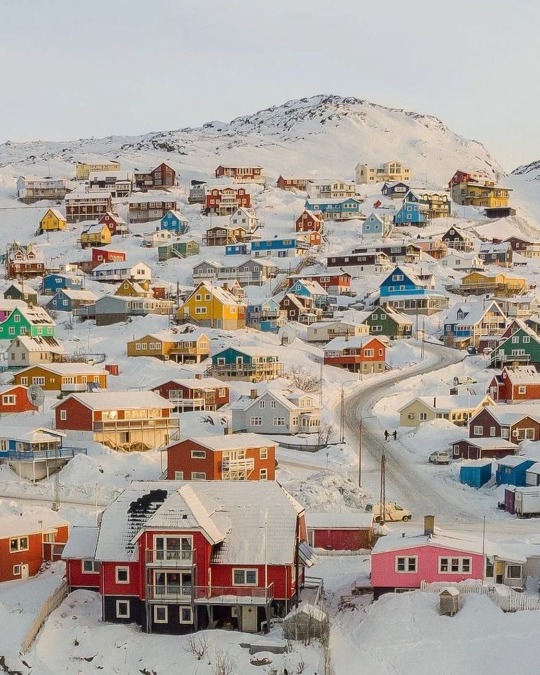#greenland🇬🇱
Explore tagged Tumblr posts
Text
The Last Flower At The Top of The World—and The Perilous Journey To Reach It
Scientists Journeyed to a Stretch of Gravel Off The Coast of Greenland—The Farthest North You Can Go and Still Walk on Land. These Photos Show What They Found There.
— By Sarah Gibbens | Photographs byJeff Kerby | May 08, 2024
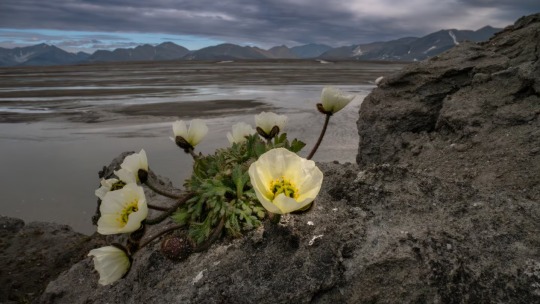
An Arctic Poppy thrives on the Northern Coast of Greenland. Among the plant life in this region, these hardy Flowers are like Giants. Some, like this one, grow in clumps that protect themselves from harsh weather. Like a satellite dish, they will slowly turn to follow the sun. On an expedition to understand what lives at this latitude, an Arctic Poppy like this was found about 20 inches south of the World's Northernmost Plant.
At the top of the Earth, the northernmost stretch of land a person can stand on is Inuit Qeqertaat, also named Kaffeklubben Island by early 20th Century Danish Explorers. The region is a dark gray stretch of gravel on the northern coast of Greenland where land slowly gives way to frozen sea ice.
To find what lives amid these rocky soils, climate change researchers and National Geographic Explorers Brian Buma and Jeff Kerby and their team embarked on a journey to survey the region. There, they found a common species of moss (Tortula Mucronifolia), the world's northernmost plant, and a yellow and lime-green Arctic poppy (Papaver Radicatum), growing just a few inches south of the moss.
On the nearby mainland, Greenlandic archaeologist Aka Simonsen discovered a ring of roughly 700-Year-Old Inuit Stones, which may be the northernmost archaeological remains.
Growing in Extremes: The Northernmost Stretch of land in the World, Inuit Qeqertaat, sits off the coast of Johannes V. Jensen Land, a Peninsula in Far Northern Greenland. National Geographic Explorer Brian Buma traveled there to find the northernmost plant-a common moss—and the northernmost flower a few inches south-an Arctic poppy.
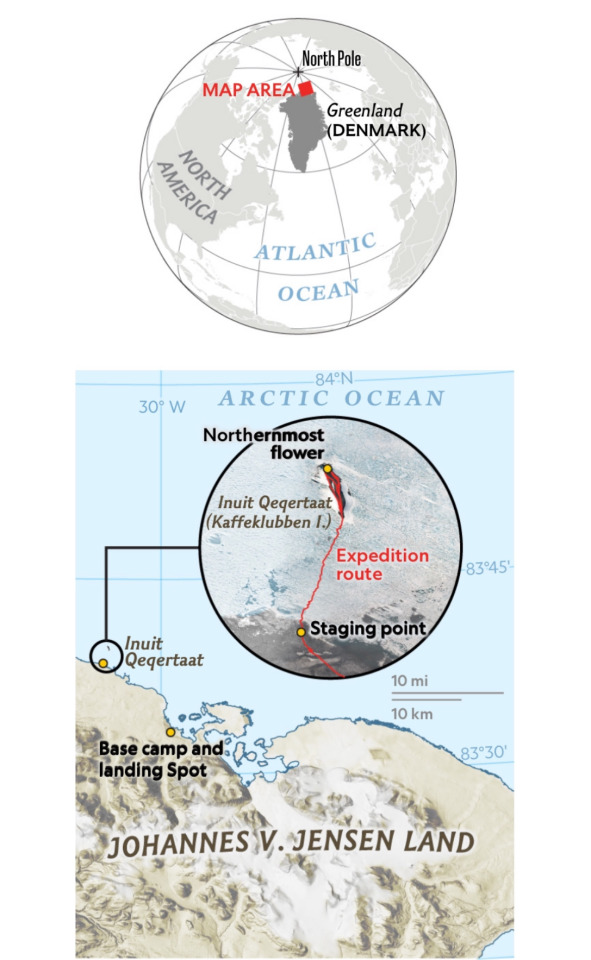
Rosemary Wardley, NGM Staff; Martin Gamache, National Geographic Society Sources: Jeff Kerby, Scott Polar Research Institute; Brian Buma, Environmental Defense Fund; SkySat imagery from July 13, 2023, Planet Labs PBC; ArcticDEM, Version 4.1
The research team left their own mark on the mainland coast, staking plots and recording the vegetation they contained to create a highly detailed digital map of the area they surveyed. Information collected from this trip will be the first data logs in what Buma and Kerby hope will be a long timeline of research in the far northern region.
Here, above the Arctic Circle, the planet is warming four times faster than anywhere else on Earth. Changes here will have ripple effects across the globe, which is why the team braved harsh conditions to find what lives on the edge.
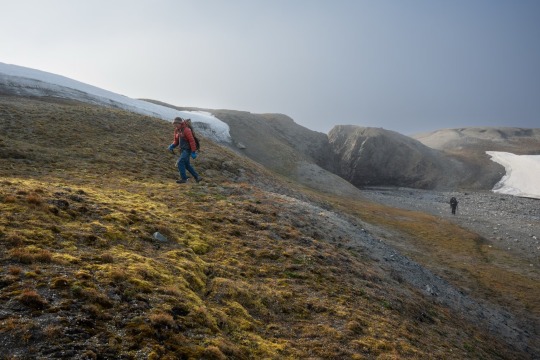
The expedition team was led by climate scientist and National Geographic Explorer Brian Buma. The north coast of Greenland was used as a staging point while shuttling gear across sea ice to Inuit Qeqertaat (Kaffeklubben Island).
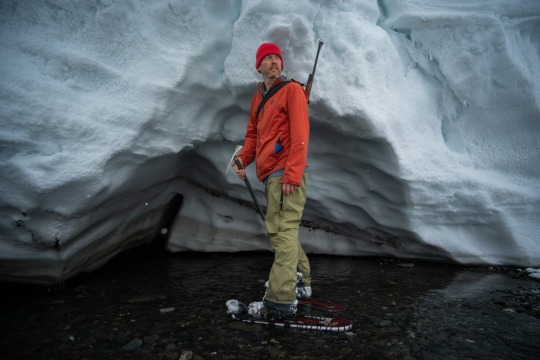
Brian Buma collected samples from different layers of this snow glacier to understand the unique properties of water in this rarely visited region. This part of the world is a polar desert, and precipitation is scant, so the samples in this glacier represent many years of snow.
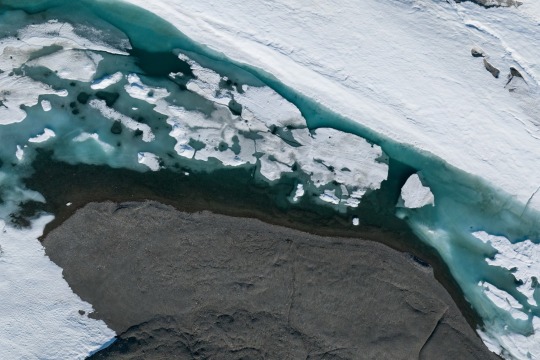
From above, the northern coast of Inuit Qeqertaat—and thus the northernmost stretch of land on Earth—is visible. It was near this shoreline that the team found the edge of terrestrial life, including a common species of moss, officially the farthest north, and the northernmost flower on earth—found about 20 inches south of the moss. The small, gravelly island is about a mile north of mainland Greenland.
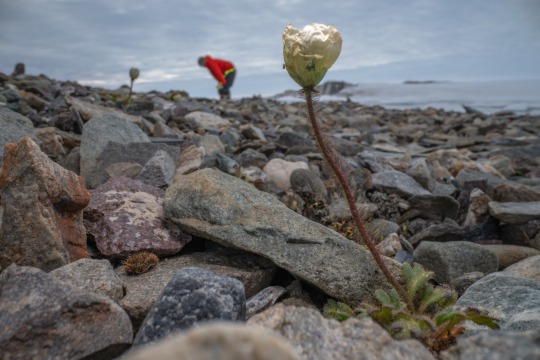
This is the northernmost flower on earth, a lone and somewhat ragged Arctic Poppy, sitting near the shoreline of Inuit Qeqertaat. Poppies dotted the northern edge, with a few purple mountain saxifrage (Saxifraga oppositifolia) only slightly farther up the slope. In the background, Brian Buma surveys various contenders for northernmost plant before a final survey determines this flower to be the official runner-up. Seen just behind the flower, a tuft of ‘Mucronate screw moss’ (Tortula mucronifolia) claims that title.
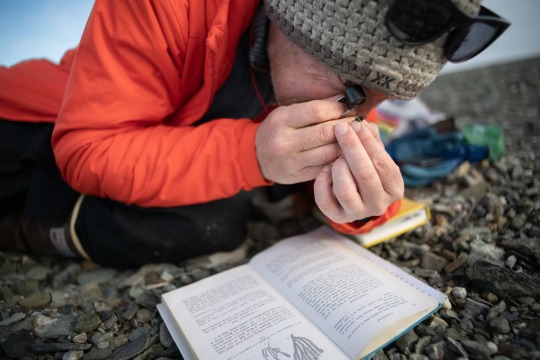
Identifying mosses and other tiny Arctic flora requires a hand lens and careful attention to detail. Up close, Brian Buma examines their adaptations to cold weather, such as small hairs coating a plant's exterior.
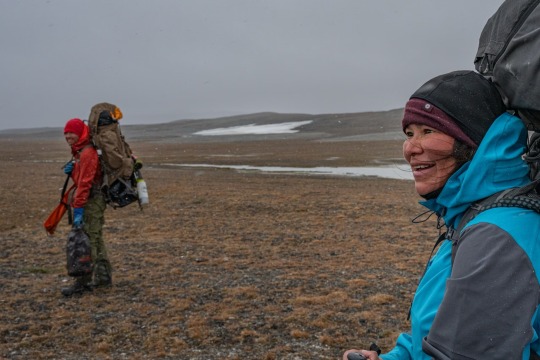
Aka Simonsen, a Greenlandic archeologist, prepares to leave camp with Brian Buma, just as the weather begins to turn. After just a few hours the northernmost island, the team left, intending to return the next day. The window to return quickly closed after a few days when bad weather turned into a storm that brought strong winds and heavy precipitation. The July storm dumped nearly a foot of snow and drifts reached several feet. Harsh conditions trapped the team at their base camp for a week.
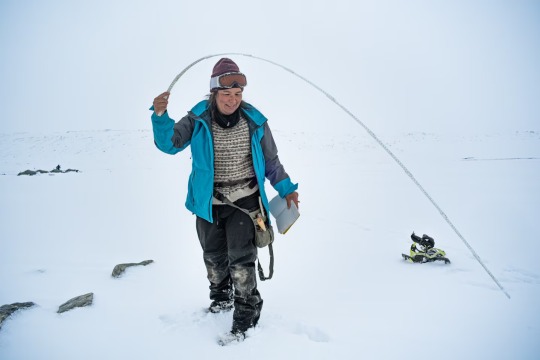
Aka Simonsen measures a ring of large stones that may have been used to anchor a tent. The stones are roughly 700 years old and likely left by the Thule people. These artifacts were found on the mainland, near the team's base camp and could be the northernmost documented archeological site on Earth.
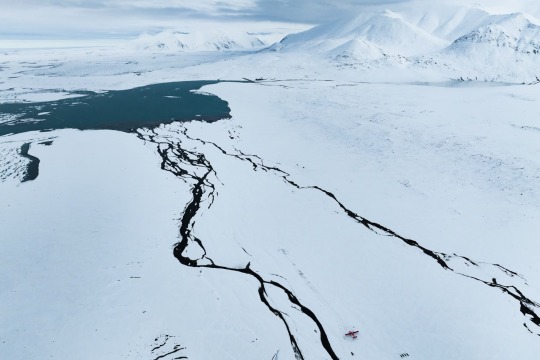
When the plane returning to retrieve the team landed, it got stuck in snow, and a makeshift runway had to be constructed by scooping snow with snow shoes. Gravel was placed by hand so the plane's tires wouldn't slip on ice or stick in snow during takeoff. Scientists who return to this northernmost region will be able to use the team's detailed digital map to chart how the ecosystem is changing as the planet warms.
#Environment#Environmental#Last Flower 🌺#Top of the World 🌎#The Perilous Journey#Scientists Journeyed | Coat of Greenland 🇬🇱#Arctic Poppy#Giant Flowers 🌺 🌸 💐#National Geographic Explorers Brian Buma | Jeff Kerby#(Tortula Mucronifolia)#Arctic poppy (Papaver Radicatum)#Inuit Qeqertaat#Kaffeklubben#20th Century Danish 🇩🇰 Explorers 🧭#700-Year-Old Inuit Stones#Johannes V. Jensen Land
17 notes
·
View notes
Text








𝙶𝚛𝚎𝚎𝚗𝚕𝚊𝚗𝚍 𝚋𝚢 𝙰𝚕𝚋𝚎𝚛𝚝 𝙳𝚛𝚘𝚜 🇬🇱
𝙻𝚘𝚘𝚔 𝚍𝚎𝚎𝚙 𝚒𝚗𝚝𝚘 𝚗𝚊𝚝𝚞𝚛𝚎, 𝚊𝚗𝚍 𝚝𝚑𝚎𝚗 𝚢𝚘𝚞 𝚠𝚒𝚕𝚕 𝚞𝚗𝚍𝚎𝚛𝚜𝚝𝚊𝚗𝚍 𝚎𝚟𝚎𝚛𝚢𝚝𝚑𝚒𝚗𝚐 𝚋𝚎𝚝𝚝𝚎𝚛. -𝙰𝚕𝚋𝚎𝚛𝚝 𝙴𝚒𝚗𝚜𝚝𝚎𝚒𝚗
𝚆𝚑𝚊𝚝 𝙰 𝚆𝚘𝚗𝚍𝚎𝚛𝚏𝚞𝚕 𝚆𝚘𝚛𝚕𝚍 𝚋𝚢 𝙻𝚘𝚞𝚒𝚜 𝙰𝚛𝚖𝚜𝚝𝚛𝚘𝚗𝚐

#l o v e#Albert dros#x-heesy#my art#artists on tumblr#3/2024#traveling#travelingwithoutmoving#What A Wonderful World#louis armstrong#Greenland#🇬🇱#aesthetic#artful quotes#text art#typography#neo pop art#pop art#Grönland#boat#Winter#winter aesthetic#now playing#music and art#contemporaryart#ice world
8 notes
·
View notes
Text
From a distance it looks like the cat is eating Greenland.

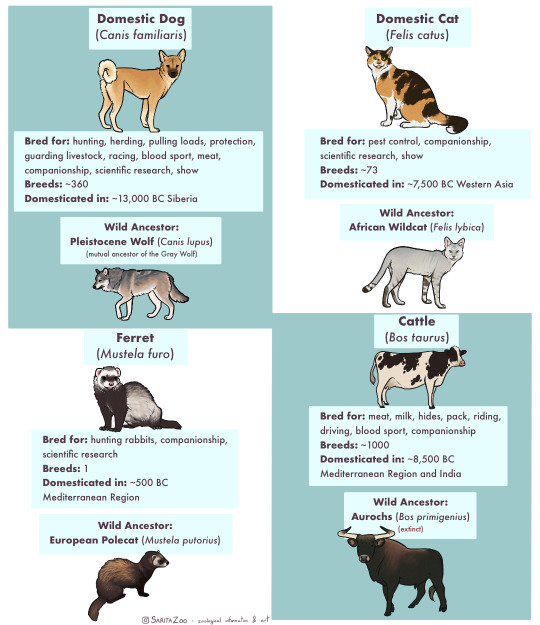


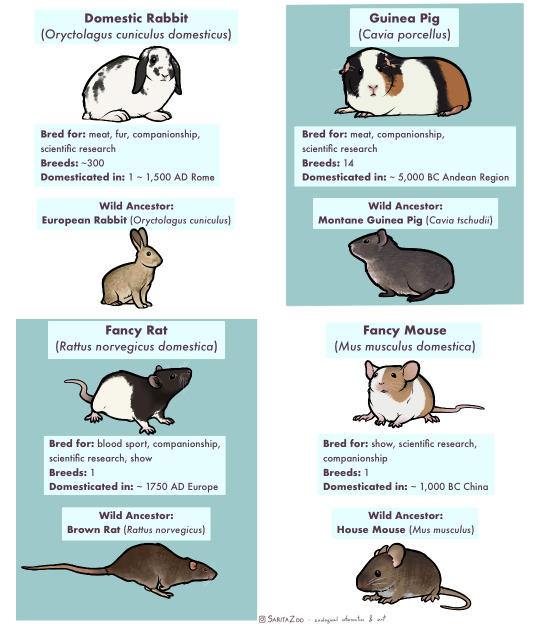
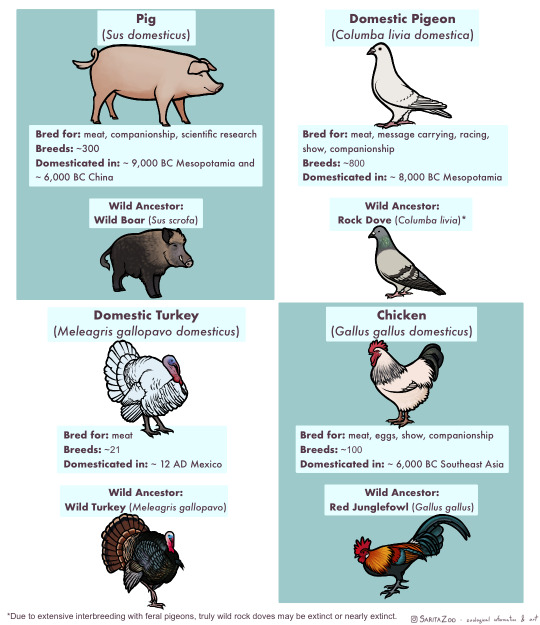
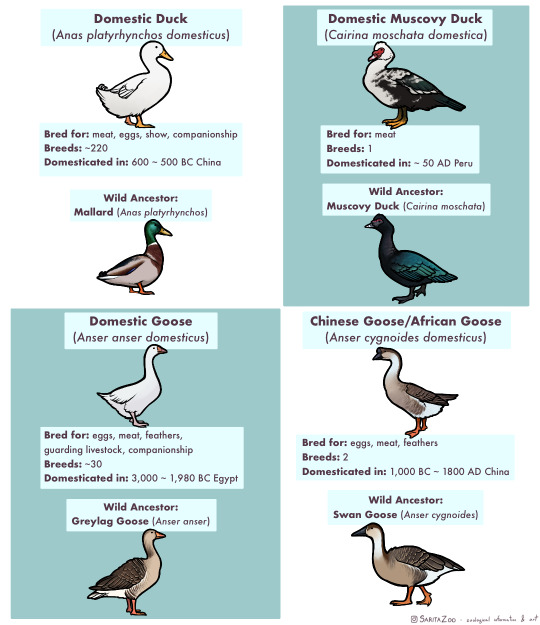
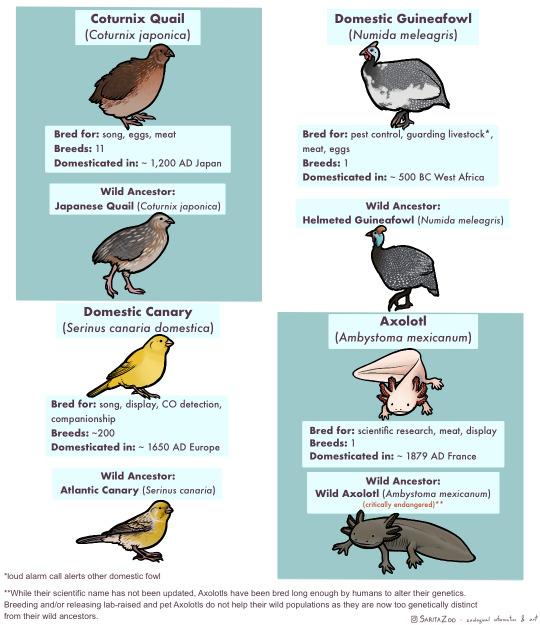
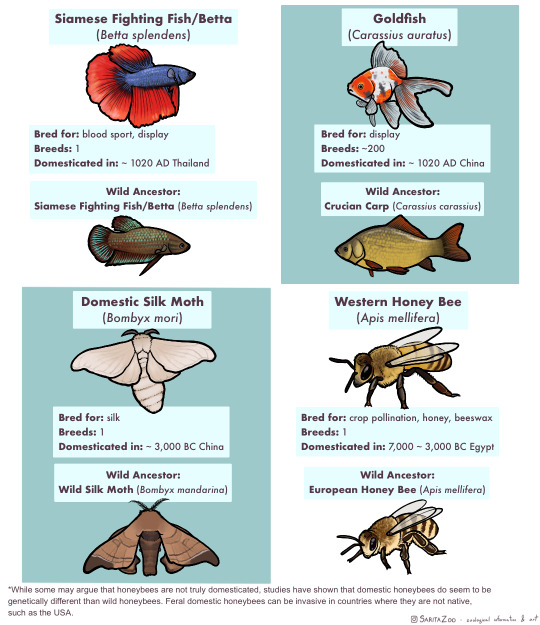

Phew. This one took, uh… a bit longer than expected due to other projects both irl and art-wise, but it’s finally here. The long-awaited domestic animal infographic! Unfortunately, I didn’t have enough space to cover every single domestic animal (I’m so sorry, reindeer and koi, my beloveds) but I tried to include as many of the “major ones” as possible.
I made this chart in response to a lot of the misunderstandings I hear concerning domestic animals, so I hope it’s helpful!
Further information I didn’t have any room to add or expand on:
🐈 “Breed” and “species” are not synonyms! Breeds are specific to domesticated animals. A Bengal Tiger is a species of tiger. A Siamese is a breed of domestic cat.
🐀 Different colors are also not what makes a breed. A breed is determined by having genetics that are unique to that breed. So a “bluenose pitbull” is not a different breed from a “rednose pitbull”, but an American Pitbull Terrier is a different breed from an American Bully! Animals that have been domesticated for longer tend to have more seperate breeds as these differing genetics have had time to develop.
🐕 It takes hundreds of generations for an animal to become domesticated. While the “domesticated fox experiment” had interesting results, there were not enough generations involved for the foxes to become truly domesticated and their differences from wild foxes were more due to epigenetics (heritable traits that do not change the DNA sequence but rather activate or deactivate parts of it; owed to the specific circumstances of its parents’ behavior and environment.)
🐎 Wild animals that are raised in human care are not domesticated, but they can be considered “tamed.” This means that they still have all their wild instincts, but are less inclined to attack or be frightened of humans. A wild animal that lives in the wild but near human settlements and is less afraid of humans is considered “habituated.” Tamed and habituated animals are not any less dangerous than wild animals, and should still be treated with the same respect. Foxes, otters, raccoons, servals, caracals, bush babies, opossums, owls, monkeys, alligators, and other wild animals can be tamed or habituated, but they have not undergone hundreds of generations of domestication, so they are not domesticated animals.
🐄 Also, as seen above, these animals have all been domesticated for a reason, be it food, transport, pest control, or otherwise, at a time when less practical options existed. There is no benefit to domesticating other species in the modern day, so if you’ve got a hankering for keeping a wild animal as a pet, instead try to find the domestic equivalent of that wild animal! There are several dog breeds that look and behave like wolves or foxes, pigeons and chickens can make great pet birds and have hundreds of colorful fancy breeds, rats can be just as intelligent and social as a small monkey (and less expensive and dangerous to boot,) and ferrets are pretty darn close to minks and otters! There’s no need to keep a wolf in a house when our ancestors have already spent 20,000+ years to make them house-compatible.
🐖 This was stated in the infographic, but I feel like I must again reiterate that domestic animals do not belong in the wild, and often become invasive when feral. Their genetics have been specifically altered in such a way that they depend on humans for optimal health. We are their habitat. This is why you only really see feral pigeons in cities, and feral cats around settlements. They are specifically adapted to live with humans, so they stay even when unwanted. However, this does not mean they should live in a way that doesn’t put their health and comfort as a top priority! If we are their world, it is our duty to make it as good as possible. Please research any pet you get before bringing them home!
34K notes
·
View notes
Text
5 years ago: Conan Negotiates With Greenland's Parliament
youtube
Trump 45 was a flaming retard conflictmonger back then; Trump 47 is old, rewarmed leftover flaming retard conflictmonger.
(President Musk stealing Conan's look needs more ridicule.)



#conan#tariffs#duties#greenland#denmark#for sale#real estate#don jr#donald trump#elon musk#🇬🇱#🇩🇰#🇺🇸#bomber jacket#Youtube#imo
0 notes
Text
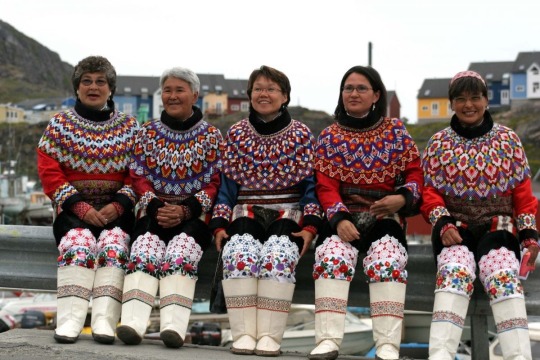





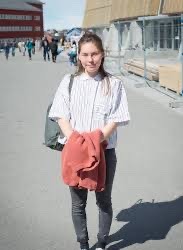
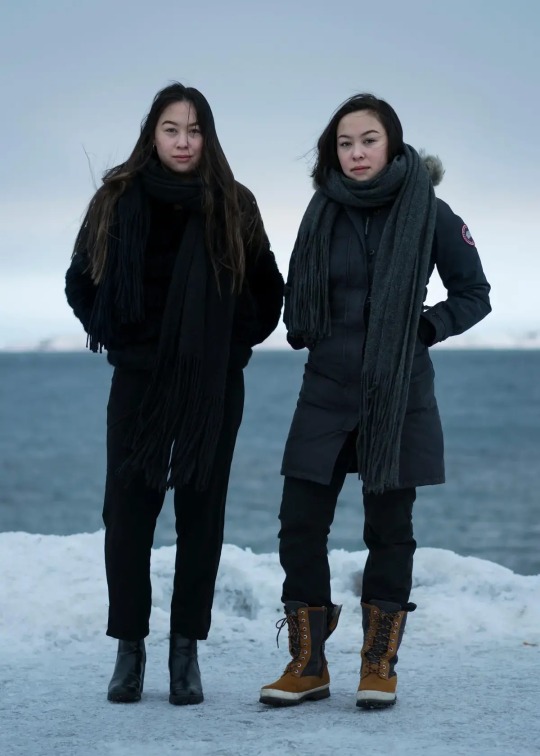
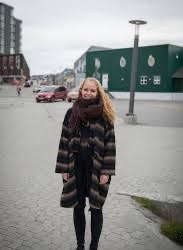

People of Greenland 🇬🇱
1 note
·
View note
Text

Greenland 🇬🇱
2K notes
·
View notes
Text
US annexing greenland 🇬🇱: gauche, ridiculous, not going to happen
US annexing canada 🇨🇦: see above, and if we jump every time trump says ‘boo’ it’s going to be an exhausting four years on our legs and also giving him what he wants
US annexing the UK 🇬🇧: genius, narratively correct, solves my problems, unironically my platform, big thumbs up
150 notes
·
View notes
Text

Iceberg Near Ilulissat, Greenland 🇬🇱. Photograph: Ulrik Pedersen/NurPhoto/Rex/Shutterstock
At What Threshold is Greenland Ice Cap’s Melting Irreversible? Melting of the 3Km-Thick Ice Cap is One of the Biggest Contributors to Sea Level Rise But Can Be Halted
— Paul Brown | Friday 27 October 2023
With bigger storms each winter taking ever larger bites out of British beaches and cliffs, the increasing speed of sea level rise is set to make things worse. One of the biggest contributors to the current rise of 3.4mm (0.13in) a year is the Greenland ice cap, which is 3km thick (just under 2 miles) and has the potential to raise sea levels by 7 metres (23ft) if it all melted.
Scientists have been working out at what temperature Greenland’s melting would become irreversible and ensure that large chunks of our islands would disappear beneath the waves.
The threshold, according to a paper in the journal Nature, is between 1.7C and 2.3C above pre-industrial levels. Since we have been exceeding 1.5C for some months this year, and on current projections global temperatures are set to rise by up to 3C this century, we are perilously close to the tipping point.
It will be a fairly gradual process, so there is time to move inland, and there is one cheerful note from the paper: if in the future we managed to get the temperature rise back down to 1.5C the melting would eventually stop again.
Against that, the researchers point out that by the time we would get back down to 1.5C, sea levels would already be 2 or 3 metres higher than now.
0 notes
Text
📍Røde Island, East Greenland 🇬🇱
#video#nature#natureza#view#explore#lake#travel#lago#iceberg#iceberg melting#cold#freezing#ocean#greenland#winter#seasons#trip#vacation#flowers
173 notes
·
View notes
Text
Pulled from FB
Has anyone checked on Denmark lately? Seems they are scrambling for some reason
🚨 GREENLAND VOTES TO JOIN THE U.S. 🚨 WEF-CONTROLLED DENMARK POWERLESS TO STOP TRUMP! 🚨 🇺🇸🇬🇱
The people of Greenland have spoken, an overwhelming vote to break free from Denmark and join the United States.
🔴 WEF puppet government in Denmark scrambling to contain the fallout.
🔴 Trump’s vision for U.S. expansion is becoming REALITY.
🔴 Denmark’s globalist overlords CAN’T stop the will of the people!
🔥 Greenland REJECTS globalist rule and embraces freedom! Will Denmark dare to defy democracy? 🔥
29 notes
·
View notes
Text
Yeah yeah Trump wanting to buy Greenland is funny and all, but did you know the island and its indigenous population have been fighting for independence and self-determination from the Denmark colonial force for half a century?
And that Greenlandic parents in Denmark, raising their kids in the Greenlandic language, often have their children taken away after “failing” a so-called “parent competency test?”
And that they are among the most threatened countries by climate change? And the only reason Trump wants to take Greenland is its rich mineral resources- the exploitation of which leads to more climate change?
And that there’s a really great documentary on all of this, and specifically the 70s rock band Sumé, who dared to sing in the kalaallisut language and accidentally kicked off a nationalist revolution?
Look beyond the headlines and hahafunnies, people. Support 🇬🇱, listen to its people, fight Trump and colonialism and climate change.
34 notes
·
View notes
Text
Arctic sunsets in Greenland 🌅 🇬🇱 !.
#Greenland#Mood#Vibes#Beauty#magic moments#magic#downfalldestiny#life#downfall#Sea#Ocean#Sunsets#Boat#Sailing#Sail#Gold hour#magic destinations#magical world#Arctic
158 notes
·
View notes



